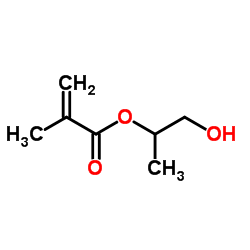P(HPMA)-block-P(LA) copolymers in paclitaxel formulations: polylactide stereochemistry controls micellization, cellular uptake kinetics, intracellular localization and drug efficiency.
Matthias Barz, Ana Armiñán, Fabiana Canal, Florian Wolf, Kaloian Koynov, Holger Frey, Rudolf Zentel, María J Vicent
文献索引:J. Control. Release 163(1) , 63-74, (2012)
全文:HTML全文
摘要
In order to explore the influence of polymer microstructure and stereochemistry in biological settings, the synthesis, micellization, cellular fate and the use in paclitaxel formulations of poly(N-(2-hydroxypropyl)-methacrylamide)-block-poly(L-lactide) (P(HPMA)-block-P(LLA)) and poly(N-(2-hydroxypropyl)-methacrylamide)-block-poly(DL-lactide) block copolymers (P(HPMA)-block-P(DLLA)) were studied. To this end, P(HPMA)-block-P(lactide) block copolymers and their fluorescently labeled analogues were synthesized. The polymers exhibited molecular weights M(n) around 20,000 g/mol with dispersities (D=M(w)/M(n)) below 1.3. In addition, the solution conformation of this new type of partially degradable amphiphilic block copolymers was studied with and without paclitaxel loading in PBS buffer (pH 7.2), employing fluorescence correlation spectroscopy (FCS). We observed polymeric micelles with a hydrodynamic diameter of 17.0 nm for a fluorescently labeled P(HPMA)-block-P(LLA) block copolymer (P2*) and 20.4 nm for a P(HPMA)-block-P(DLLA) block copolymer (P3*). For the corresponding loaded block copolymers aggregates with a diameter of 40.0 nm (P2*) and 41.4 nm (P3*) in formulations containing 17 wt.% paclitaxel were observed, respectively. While the block copolymer itself showed non-toxic behavior up to a concentration of 3 mg/mL in HeLa (human cervix adenocarcinoma) cells, the paclitaxel containing formulations showed IC 50 values in the range of 10-100 nM. The P(HPMA)-block-P(DLLA) polymer (P3*) enters the cells more efficiently than stereo regular polymer (P2*) via an energy-dependent uptake mechanism. Thus, differences in the IC(50) value are--most likely--attributed to significant changes in cellular uptake. Polymer tacticity and stereoregularity appear to represent a key feature determining cellular uptake and efficiency for the PLA block copolymer drug formulations. This work demonstrates the importance of the microstructure of polymers used in drug delivery systems (DDS).Copyright © 2012 Elsevier B.V. All rights reserved.
相关化合物
| 结构式 | 名称/CAS号 | 分子式 | 全部文献 |
|---|---|---|---|
 |
甲基丙烯酸羟丙酯
CAS:27813-02-1 |
C7H12O3 |
|
Amphiphilic HPMA-LMA copolymers increase the transport of Rh...
2012-10-28 [J. Control. Release 163(2) , 170-7, (2012)] |
|
Aggregation behavior of amphiphilic p(HPMA)-co-p(LMA) copoly...
2012-12-10 [Biomacromolecules 13(12) , 4065-74, (2012)] |
|
Efficiency of high molecular weight backbone degradable HPMA...
2013-09-01 [Biomaterials 34(27) , 6528-38, (2013)] |
|
Biological activity of anti-CD20 multivalent HPMA copolymer-...
2012-03-12 [Biomacromolecules 13(3) , 727-35, (2012)] |
|
Anti-CD20 multivalent HPMA copolymer-Fab' conjugates for the...
2012-10-01 [Biomaterials 33(29) , 7174-81, (2012)] |